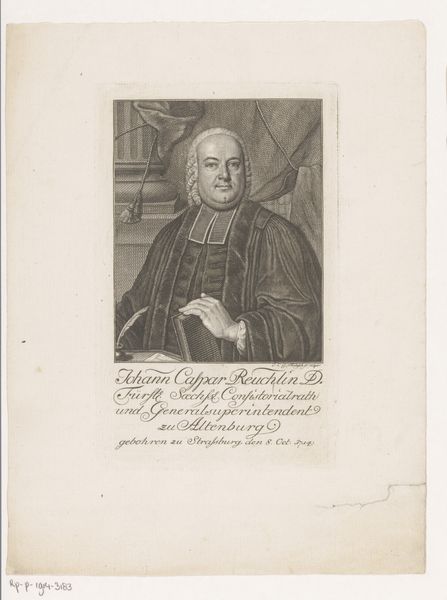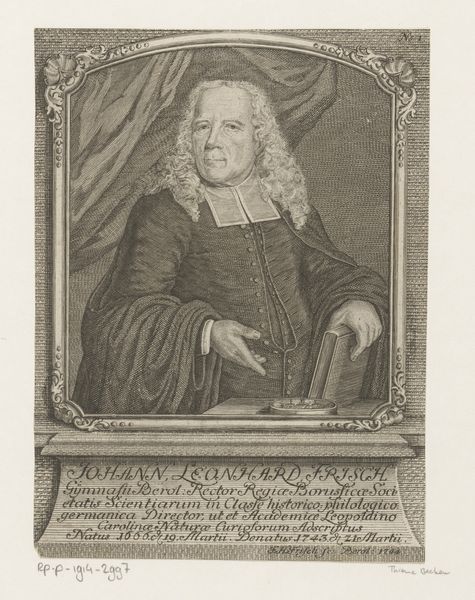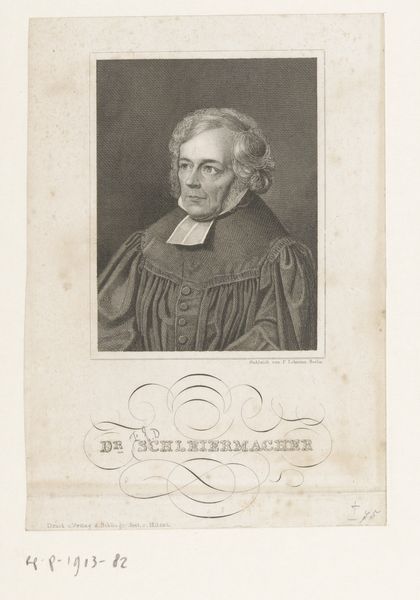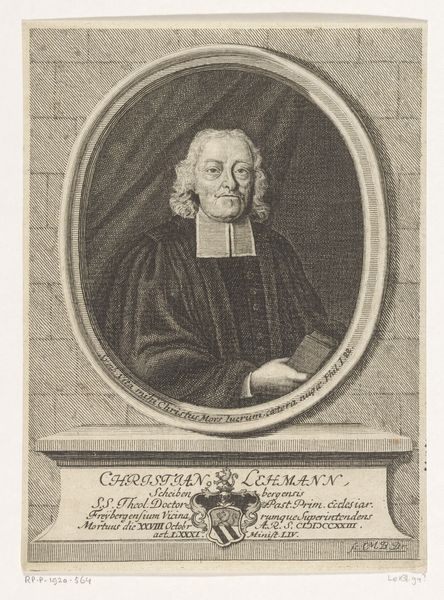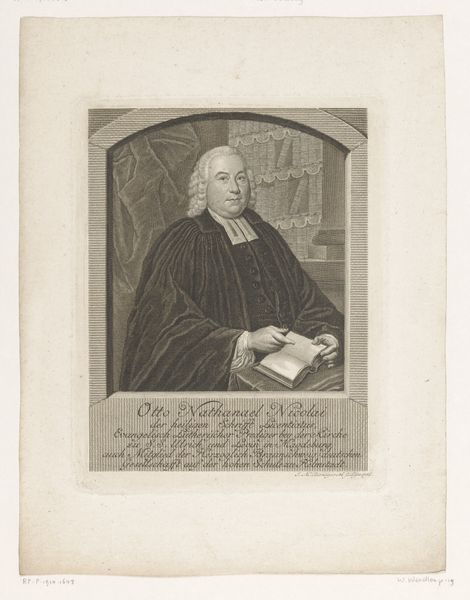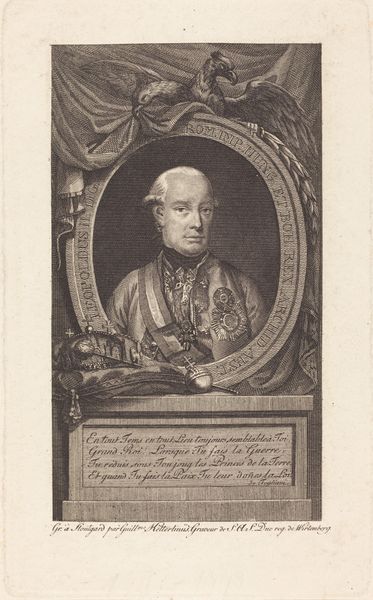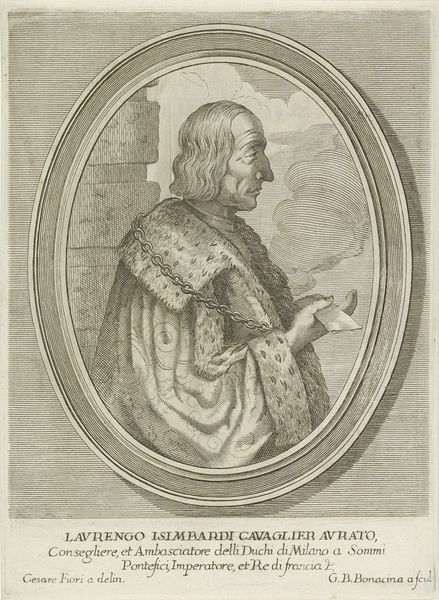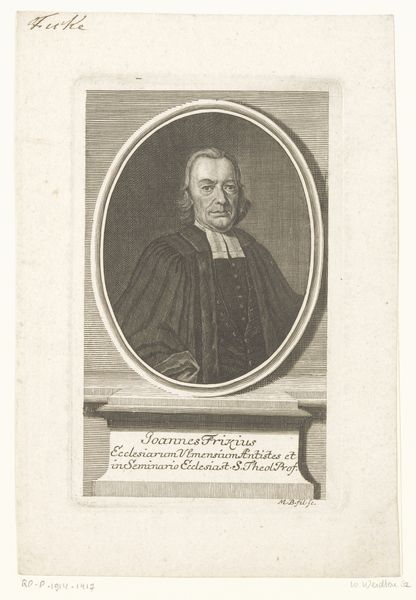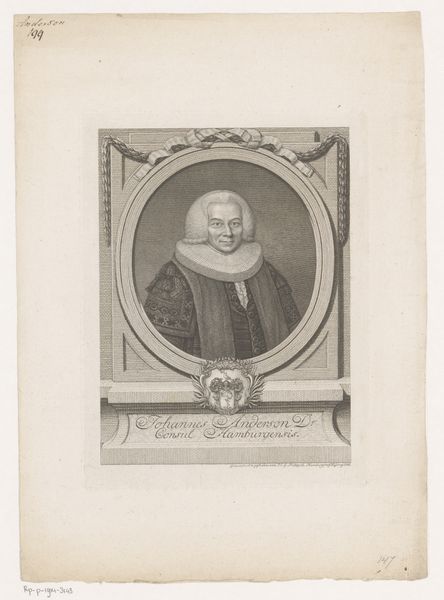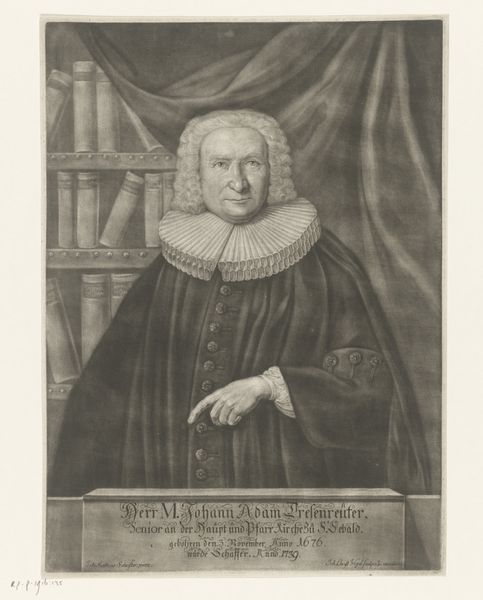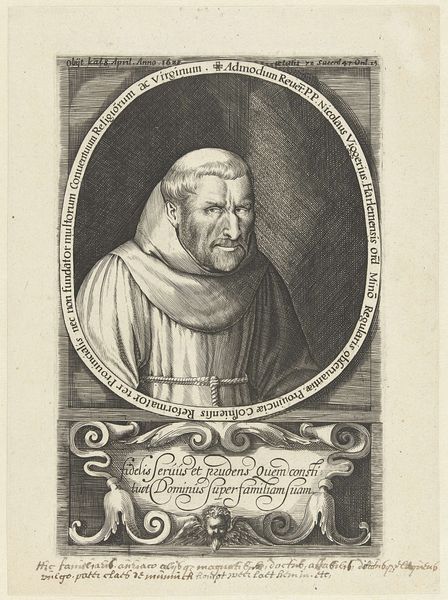
Dimensions: height 298 mm, width 200 mm
Copyright: Rijks Museum: Open Domain
Curator: Let's consider this engraving, "Portrait of the Poet and Humanist Salvino Salvini." From a materialist perspective, what initially strikes you about it, observing its creation process? Editor: Well, the crisp lines and intricate details definitely point to engraving. It also looks like it could be "historical photography," though. How was this portrait made back then? Curator: Exactly! The method, an engraving, shows us a time where images were painstakingly rendered, where artistic skill also reflected labor, which defined visibility and the spread of information, how do you see the image circulated? Editor: So, if this portrait was made using engraving in that time period, what does the decision to portray Salvini this way tell us about who the audience was or the purpose it served? Curator: Good question! It’s about commemorating Salvini’s life and achievements to an intellectual circle or at least someone who can read Italian! This could tell us more about the social and economic status and educational attainment. What else do you notice? Editor: I didn't really notice, at first. What did he do and how important was his likeness back then? Curator: That’s a point; such choices are crucial to understand both artistic practice and contemporary consumption habits, and, of course, a famous, educated male during that time must reflect on the values assigned to it and consumed by those around. Now what is something you learned in order for future tours like this? Editor: It helps to question more deeply who the artwork was FOR, not just what it depicts, or even how beautiful the person portrayed. I didn't expect we could analyze art this way! Curator: Agreed! And focusing on that approach, you are more well-equipped to navigate your future interactions with works like these in an exciting manner.
Comments
No comments
Be the first to comment and join the conversation on the ultimate creative platform.
